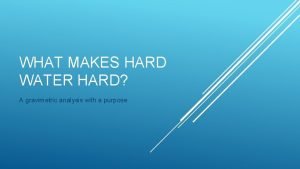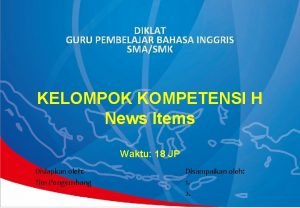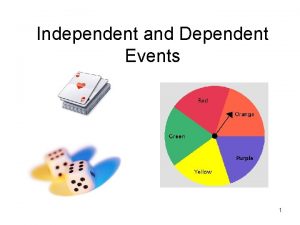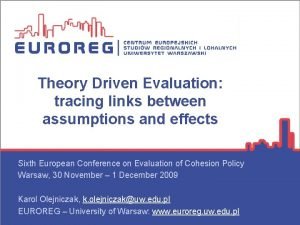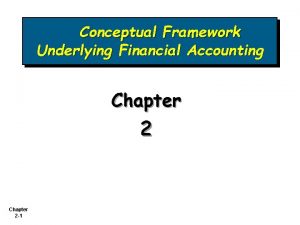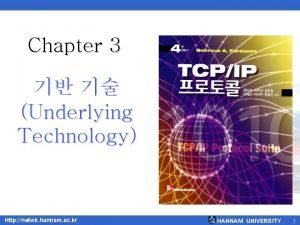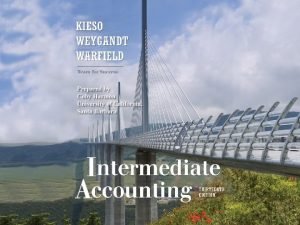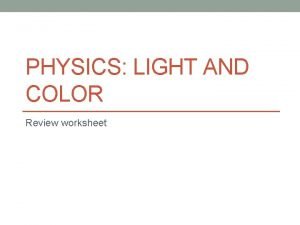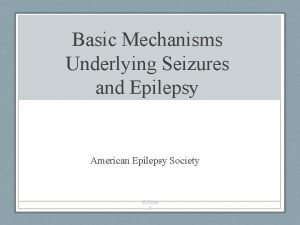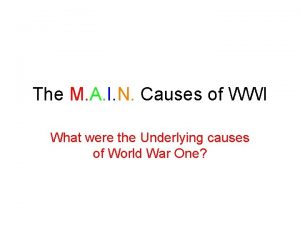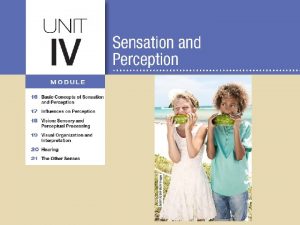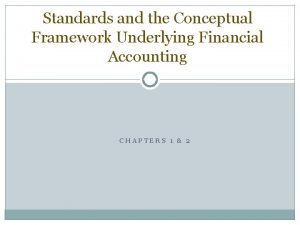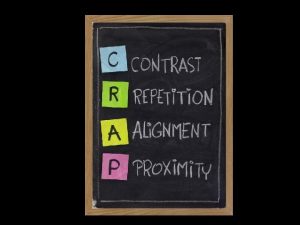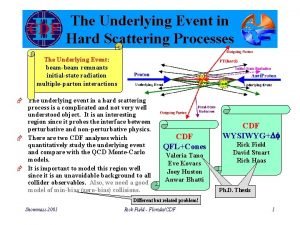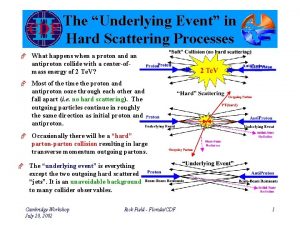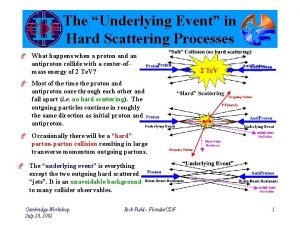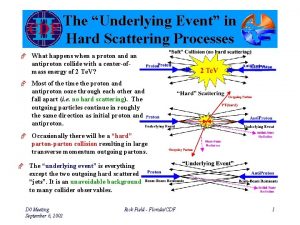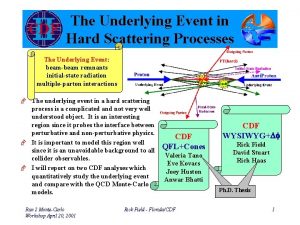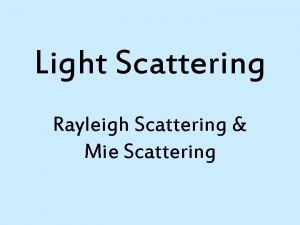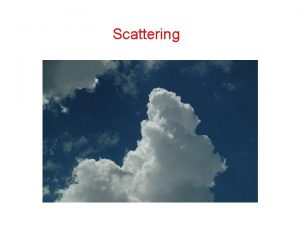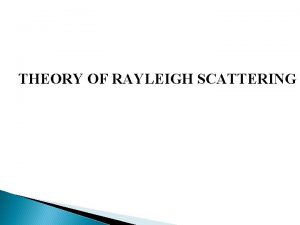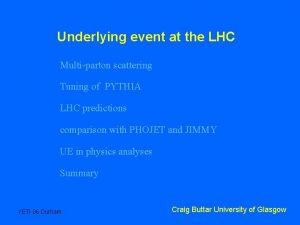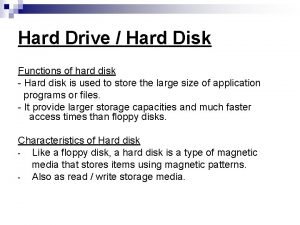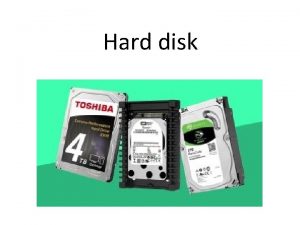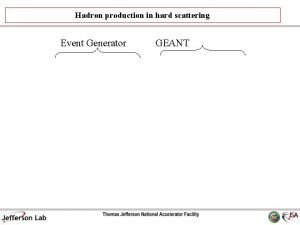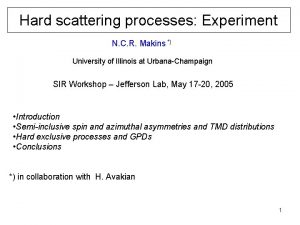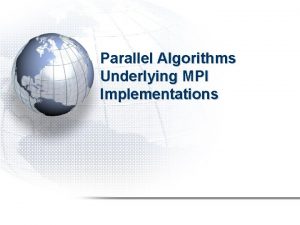The Underlying Event in Hard Scattering Processes The



























- Slides: 27

The Underlying Event in Hard Scattering Processes The Underlying Event: beam-beam remnants initial-state radiation multiple-parton interactions Æ The underlying event in a hard scattering process is a complicated and not very well understood object. It is an interesting region since it probes the interface between perturbative and non-perturbative physics. Æ It is important to model this region well since it is an unavoidable background to all collider observables. Æ I will report on two CDF analyses which quantitatively study the underlying event and compare with the QCD Monte-Carlo models. Run 2 Monte-Carlo Workshop April 20, 2001 CDF QFL+Cones Valeria Tano Eve Kovacs Joey Huston Anwar Bhatti Rick Field - Florida/CDF WYSIWYG+Df Rick Field David Stuart Rich Haas Ph. D. Thesis 1

WYSIWYG: Comparing Data with QCD Monte-Carlo Models Charged Particle Data Select “clean” region Æ Æ Æ WYSIWYG What you see is what you get. Almost! Make efficiency corrections Look only at the charged particles measured by the CTC. Zero or one vertex |zc-zv| < 2 cm, |CTC d 0| < 1 cm Require PT > 0. 5 Ge. V, |h| < 1 Assume a uniform track finding efficiency of 92% Errors include both statistical and correlated systematic uncertainties Æ Require PT > 0. 5 Ge. V, |h| < 1 Æ Make an 8% correction for the compare Uncorrected data Run 2 Monte-Carlo Workshop April 20, 2001 QCD Monte-Carlo Æ track finding efficiency Errors (statistical plus systematic) of around 5% Corrected theory Rick Field - Florida/CDF Small Corrections! 2

Charged Particle Df Correlations Æ Look at charged particle correlations in the azimuthal angle Df relative to the leading charged Æ Æ particle jet. Define |Df| < 60 o as “Toward”, 60 o < |Df| < 120 o as “Transverse”, and |Df| > 120 o as “Away”. All three regions have the same size in h-f space, Dhx. Df = 2 x 120 o = 4 p/3. Run 2 Monte-Carlo Workshop April 20, 2001 Rick Field - Florida/CDF 3

Charged Multiplicity versus PT(chgjet#1) Underlying Event “plateau” Æ Data on the average number of “toward” (|Df|<60 o), “transverse” (60<|Df|<120 o), and “away” (|Df|>120 o) charged particles (PT > 0. 5 Ge. V, |h| < 1, including jet#1) as a function of the transverse momentum of the leading charged particle jet. Each point corresponds to the <Nchg> in a 1 Ge. V bin. The solid (open) points are the Min-Bias (JET 20) data. The errors on the (uncorrected) data include both statistical and correlated systematic uncertainties. Run 2 Monte-Carlo Workshop April 20, 2001 Rick Field - Florida/CDF 4

Shape of an Average Event with PT(chgjet#1) = 20 Ge. V/c Includes Jet#1 Underlying event “plateau” Remember |h| < 1 PT > 0. 5 Ge. V Shape in Nchg Run 2 Monte-Carlo Workshop April 20, 2001 Rick Field - Florida/CDF 5

“Height” of the Underlying Event “Plateau” Implies 1. 09*3(2. 4)/2 = 3. 9 charged particles per unit h with PT > 0. 5 Ge. V. Hard 4 per unit h Run 2 Monte-Carlo Workshop April 20, 2001 Soft Implies 2. 3*3. 9 = 9 charged particles per unit h with PT > 0 Ge. V which is a factor of 2 larger than “soft” collisions. Rick Field - Florida/CDF 6

“Transverse” Nchg versus PT(chgjet#1) Isajet 7. 32 Pythia 6. 115 Herwig 5. 9 Æ Plot shows the “Transverse” <Nchg> versus PT(chgjet#1) compared to the QCD Æ hard scattering predictions of Herwig 5. 9, Isajet 7. 32, and Pythia 6. 115 (default parameters with PT(hard)>3 Ge. V/c). Only charged particles with |h| < 1 and PT > 0. 5 Ge. V are included and the QCD Monte. Carlo predictions have been corrected for efficiency. Run 2 Monte-Carlo Workshop April 20, 2001 Rick Field - Florida/CDF 7

“Transverse” PTsum versus PT(chgjet#1) Isajet 7. 32 Pythia 6. 115 Herwig 5. 9 Æ Plot shows the “Transverse” <PTsum> versus PT(chgjet#1) compared to the QCD Æ hard scattering predictions of Herwig 5. 9, Isajet 7. 32, and Pythia 6. 115 (default parameters with PT(hard)>3 Ge. V/c). Only charged particles with |h| < 1 and PT > 0. 5 Ge. V are included and the QCD Monte. Carlo predictions have been corrected for efficiency. Run 2 Monte-Carlo Workshop April 20, 2001 Rick Field - Florida/CDF 8

The Underlying Event: Di. Jet vs Z-Jet Æ Look at charged particle correlations in the azimuthal angle Df relative to the leading charged Æ Æ particle jet or the Z-boson. Define |Df| < 60 o as “Toward”, 60 o < |Df| < 120 o as “Transverse”, and |Df| > 120 o as “Away”. All three regions have the same size in h-f space, Dhx. Df = 2 x 120 o= 4 p/3. Run 2 Monte-Carlo Workshop April 20, 2001 Rick Field - Florida/CDF 9

Z-boson: Charged Multiplicity versus PT(Z) Æ Z-boson data on the average number of “toward” (|Df|<60 o), “transverse” (60<|Df|<120 o), and “away” (|Df|>120 o) charged particles (PT > 0. 5 Ge. V, |h| < 1, excluding decay products of the Zboson) as a function of the transverse momentum of the Z-boson. The errors on the (uncorrected) data include both statistical and correlated systematic uncertainties. Run 2 Monte-Carlo Workshop April 20, 2001 Rick Field - Florida/CDF 10

Di. Jet vs Z-Jet “Transverse” Nchg PYTHIA Di. Jet Z-boson Æ Comparison of the dijet and the Z-boson data on the average number of charged Æ particles (PT > 0. 5 Ge. V, |h| <1) for the “transverse” region. The plot shows the QCD Monte-Carlo predictions of PYTHIA 6. 115 (default parameters with PT(hard)>3 Ge. V/c) for dijet (dashed) and “Z-jet” (solid) production. Run 2 Monte-Carlo Workshop April 20, 2001 Rick Field - Florida/CDF 11

QFL: Comparing Data with QCD Monte-Carlo Models Charged Particle And Calorimeter Data Select region QCD Look only at both the Monte-Carlo charged particles measured by the CTC and the calorimeter data. QFL Tano-Kovacs-Huston-Bhatti Æ Calorimeter: tower threshold = 50 Æ Me. V, Etot < 1800 Ge. V, |hlj| < 0. 7, |zvtx| < 60 cm, 1 and only 1 class 10, 11, or 12 vertex Tracks: |zc-zv| < 5 cm, |CTC d 0| < 0. 5 cm, PT > 0. 4 Ge. V, |h| < 1 compare Uncorrected data Run 2 Monte-Carlo Workshop April 20, 2001 detector simulation Æ Require PT > 0. 4 Ge. V, |h| < 1 Æ Correct for track finding efficiency Corrected theory Rick Field - Florida/CDF 12

“Transverse” Cones Transverse Cone: p(0. 7)2=0. 49 p Tano-Kovacs-Huston-Bhatti Transverse Region: 2(p/3)=0. 66 p Æ Sum the PT of charged particles (or the energy) in two cones of radius 0. 7 at the same h as the leading jet but with |DF| = 90 o. Æ Plot the cone with the maximum and minimum PTsum versus the ET of the leading (calorimeter) jet. . Run 2 Monte-Carlo Workshop April 20, 2001 Rick Field - Florida/CDF 13

Transverse Region vs Transverse Cones Field-Stuart-Haas 3. 4 Ge. V/c 2. 1 Ge. V/c 0. 4 Ge. V/c 0 < PT(chgjet#1) < 50 Ge. V/c Æ Add max and min cone: 2. 1 Ge. V/c + 0. 4 Ge. V/c = 2. 5 Ge. V/c. Æ Multiply by ratio of the areas: (2. 5 Ge. V/c)(1. 36) = 3. 4 Ge. V/c. Æ The two analyses are consistent! Run 2 Monte-Carlo Workshop April 20, 2001 Rick Field - Florida/CDF 0 < ET(jet#1) < 50 Ge. V/c Tano-Kovacs-Huston-Bhatti 14

Max/Min Cones at 630 Ge. V/c Æ HERWIG+QFL slightly lower at 1, 800 Ge. V/c agrees at 630 Ge. V/c. Run 2 Monte-Carlo Workshop April 20, 2001 Rick Field - Florida/CDF Tano-Kovacs-Huston-Bhatti 15

ISAJET: “Transverse” Nchg versus PT(chgjet#1) ISAJET Initial-State Radiation Beam-Beam Remnants Outgoing Jets Æ Plot shows the “transverse” <Nchg> vs PT(chgjet#1) compared to the QCD hard Æ scattering predictions of ISAJET 7. 32 (default parameters with PT(hard)>3 Ge. V/c). The predictions of ISAJET are divided into three categories: charged particles that arise from the break-up of the beam and target (beam-beam remnants), charged particles that arise from initial-state radiation, and charged particles that result from the outgoing jets plus final-state radiation. Run 2 Monte-Carlo Workshop April 20, 2001 Rick Field - Florida/CDF 16

PYTHIA: “Transverse” Nchg versus PT(chgjet#1) PYTHIA Outgoing Jets plus Initial & Final-State Radiation Beam-Beam Remnants Æ Plot shows the “transverse” <Nchg> vs PT(chgjet#1) compared to the QCD hard Æ scattering predictions of PYTHIA 6. 115 (default parameters with PT(hard)>3 Ge. V/c). The predictions of PYTHIA are divided into two categories: charged particles that arise from the break-up of the beam and target (beam-beam remnants); and charged particles that arise from the outgoing jet plus initial and final-state radiation (hard scattering component). Run 2 Monte-Carlo Workshop April 20, 2001 Rick Field - Florida/CDF 17

Hard Scattering Component: “Transverse” Nchg vs PT(chgjet#1) ISAJET PYTHIA HERWIG Æ QCD hard scattering predictions of HERWIG 5. 9, ISAJET 7. 32, and PYTHIA 6. 115. Æ Plot shows the dijet “transverse” <Nchg> vs PT(chgjet#1) arising from the outgoing jets Æ plus initial and finial-state radiation (hard scattering component). HERWIG and PYTHIA modify the leading-log picture to include “color coherence effects” which leads to “angle ordering” within the parton shower. Angle ordering produces less high PT radiation within a parton shower. Run 2 Monte-Carlo Workshop April 20, 2001 Rick Field - Florida/CDF 18

PYTHIA: Multiple Parton Interactions Pythia uses multiple parton interactions to enhace the underlying event. Parameter Value MSTP(81) 0 Multiple-Parton Scattering off 1 Multiple-Parton Scattering on 1 Multiple interactions assuming the same probability, with an abrupt cut-off PTmin=PARP(81) 3 Multiple interactions assuming a varying impact parameter and a hadronic matter overlap consistent with a single Gaussian matter distribution, with a smooth turnoff PT 0=PARP(82) 4 Multiple interactions assuming a varying impact parameter and a hadronic matter overlap consistent with a double Gaussian matter distribution (governed by PARP(83) and PARP(84)), with a smooth turn-off PT 0=PARP(82) MSTP(82) Run 2 Monte-Carlo Workshop April 20, 2001 Description Rick Field - Florida/CDF and new HERWIG ! Multiple parton interaction more likely in a hard (central) collision! Hard Core 19

PYTHIA Multiple Parton Interactions PYTHIA default parameters Parameter 6. 115 6. 125 MSTP(81) 1 1 MSTP(82) 1 1 PARP(81) 1. 4 Ge. V/c 1. 9 Ge. V/c PARP(82) 1. 55 Ge. V/c 2. 1 Ge. V/c 6. 115 6. 125 No multiple scattering Æ Plot shows “Transverse” <Nchg> versus PT(chgjet#1) compared to the QCD hard Æ Æ Æ scattering predictions of PYTHIA with PT(hard) > 3 Ge. V. PYTHIA 6. 115: GRV 94 L, MSTP(82)=1, PTmin=PARP(81)=1. 4 Ge. V/c. PYTHIA 6. 125: GRV 94 L, MSTP(82)=1, PTmin=PARP(81)=1. 9 Ge. V/c. PYTHIA 6. 115: GRV 94 L, MSTP(81)=0, no multiple parton interactions. Run 2 Monte-Carlo Workshop April 20, 2001 Rick Field - Florida/CDF Constant Probability Scattering 20

PYTHIA Multiple Parton Interactions Note: Multiple parton interactions depend sensitively on the PDF’s! Æ Plot shows “Transverse” <Nchg> versus PT(chgjet#1) compared to the QCD hard Æ Æ Æ scattering predictions of PYTHIA with PT(hard) > 0 Ge. V. PYTHIA 6. 115: GRV 94 L, MSTP(82)=1, PTmin=PARP(81)=1. 4 Ge. V/c. PYTHIA 6. 115: CTEQ 3 L, MSTP(82)=1, PTmin =PARP(81)=0. 9 Ge. V/c. Run 2 Monte-Carlo Workshop April 20, 2001 Rick Field - Florida/CDF Constant Probability Scattering 21

PYTHIA Multiple Parton Interactions Note: Multiple parton interactions depend sensitively on the PDF’s! Æ Plot shows “Transverse” <Nchg> versus PT(chgjet#1) compared to the QCD hard Æ Æ Æ scattering predictions of PYTHIA with PT(hard) > 0 Ge. V. PYTHIA 6. 115: GRV 94 L, MSTP(82)=3, PT 0=PARP(82)=1. 55 Ge. V/c. PYTHIA 6. 115: CTEQ 3 L, MSTP(82)=3, PT 0=PARP(82)=1. 35 Ge. V/c. Run 2 Monte-Carlo Workshop April 20, 2001 Rick Field - Florida/CDF Varying Impact Parameter 22

PYTHIA Multiple Parton Interactions Note: Multiple parton interactions depend sensitively on the PDF’s! Æ Plot shows “Transverse” <Nchg> versus PT(chgjet#1) compared to the QCD hard Æ Æ Æ scattering predictions of PYTHIA with PT(hard) > 0 Ge. V. PYTHIA 6. 115: CTEQ 4 L, MSTP(82)=4, PT 0=PARP(82)=1. 55 Ge. V/c. PYTHIA 6. 115: CTEQ 3 L, MSTP(82)=4, PT 0=PARP(82)=1. 55 Ge. V/c. PYTHIA 6. 115: CTEQ 4 L, MSTP(82)=4, PT 0=PARP(82)=2. 4 Ge. V/c. Run 2 Monte-Carlo Workshop April 20, 2001 Rick Field - Florida/CDF Varying Impact Parameter Hard Core 23

PYTHIA Multiple Parton Interactions Describes correctly the rise from soft-collisions to hard-collisions! Æ Plot shows “Transverse” <Nchg> versus PT(chgjet#1) compared to the QCD hard Æ Æ scattering predictions of PYTHIA with PT(hard) > 0 Ge. V. PYTHIA 6. 115: CTEQ 3 L, MSTP(82)=3, PT 0=PARP(82)=1. 35 Ge. V/c. PYTHIA 6. 115: CTEQ 4 L, MSTP(82)=4, PT 0=PARP(82)=2. 4 Ge. V/c. Run 2 Monte-Carlo Workshop April 20, 2001 Rick Field - Florida/CDF Varying Impact Parameter 24

PYTHIA Multiple Parton Interactions Describes correctly the rise from soft-collisions to hard-collisions! Æ Plot shows “Transverse” <PTsum> versus PT(chgjet#1) compared to the QCD hard Æ Æ scattering predictions of PYTHIA with PT(hard) > 0 Ge. V. PYTHIA 6. 115: CTEQ 3 L, MSTP(82)=3, PT 0=PARP(82)=1. 35 Ge. V/c. PYTHIA 6. 115: CTEQ 4 L, MSTP(82)=4, PT 0=PARP(82)=2. 4 Ge. V/c. Run 2 Monte-Carlo Workshop April 20, 2001 Rick Field - Florida/CDF Varying Impact Parameter 25

The Underlying Event: Summary & Conclusions The “Underlying Event” Æ The underlying event is very similar in dijet and the Z-boson production as predicted by Æ Æ the QCD Monte-Carlo models. The number of charged particles per unit rapidity (height of the “plateau”) is at least twice that observed in “soft” collisions at the same corresponding energy. ISAJET (with independent fragmentation) produces too many (soft) particles in the underlying event with the wrong dependence on PT(jet#1) or PT(Z). HERWIG and PYTHIA modify the leading-log picture to include “color coherence effects” which leads to “angle ordering” within the parton shower and do a better job describing the underlying event. HERWIG 5. 9 does not have enough activity in the underlying event. PYTHIA (with multiple parton interactions) does the best job in describing the underlying event. Combining the two CDF analyses gives a quantitative study of the underlying event from very soft collisions to very hard collisions. Run 2 Monte-Carlo Workshop April 20, 2001 Rick Field - Florida/CDF 26

Multiple Parton Interactions: Summary & Conclusions Proton Multiple Parton Interactions Anti. Proton Hard Core Æ The increased activity in the underlying event in a hard scattering over a soft collision Æ Æ Æ cannot be explained by initial-state radiation. Multiple parton interactions gives a natural way of explaining the increased activity in the underlying event in a hard scattering. A hard scattering is more likely to occur when the hard cores overlap and this is also when the probability of a multiple parton interaction is greatest. For a soft grazing collision the probability of a multiple parton interaction is small. Slow! PYTHIA (with varying impact parameter) describes the data very nicely! I need to check out the new version of HERWIG. Multiple parton interactions are very sensitive to the parton structure functions. You must first decide on a particular PDF and then tune the multiple parton interactions to fit the data. Run 2 Monte-Carlo Workshop April 20, 2001 Rick Field - Florida/CDF 27
 Concurrent processes are processes that
Concurrent processes are processes that Itil-driven event management processes
Itil-driven event management processes Have fun work hard make history
Have fun work hard make history Hard times hard drive
Hard times hard drive Gravimetric analysis of calcium and hard water
Gravimetric analysis of calcium and hard water Compound probability examples
Compound probability examples Bridge breaks in central java killing
Bridge breaks in central java killing Independent event vs dependent event
Independent event vs dependent event Town contaminated moscow
Town contaminated moscow Independent event vs dependent event
Independent event vs dependent event Sentinel event report example
Sentinel event report example Events management team structure
Events management team structure Underlying theory in research
Underlying theory in research Fair value historical cost
Fair value historical cost Underlying technology
Underlying technology The underlying theme of the conceptual framework is
The underlying theme of the conceptual framework is Color theory worksheets
Color theory worksheets 10 slides kawasaki
10 slides kawasaki Basic mechanisms underlying seizures and epilepsy
Basic mechanisms underlying seizures and epilepsy Ter thin client
Ter thin client What are the underlying causes of ww1
What are the underlying causes of ww1 Narmeen is viewing the board in the classroom
Narmeen is viewing the board in the classroom Underlying causes of ww1
Underlying causes of ww1 Assumptions of conceptual framework
Assumptions of conceptual framework Underlying technology
Underlying technology 10 slides kawasaki
10 slides kawasaki Underlying assumptions of ai
Underlying assumptions of ai Underlying principles
Underlying principles




